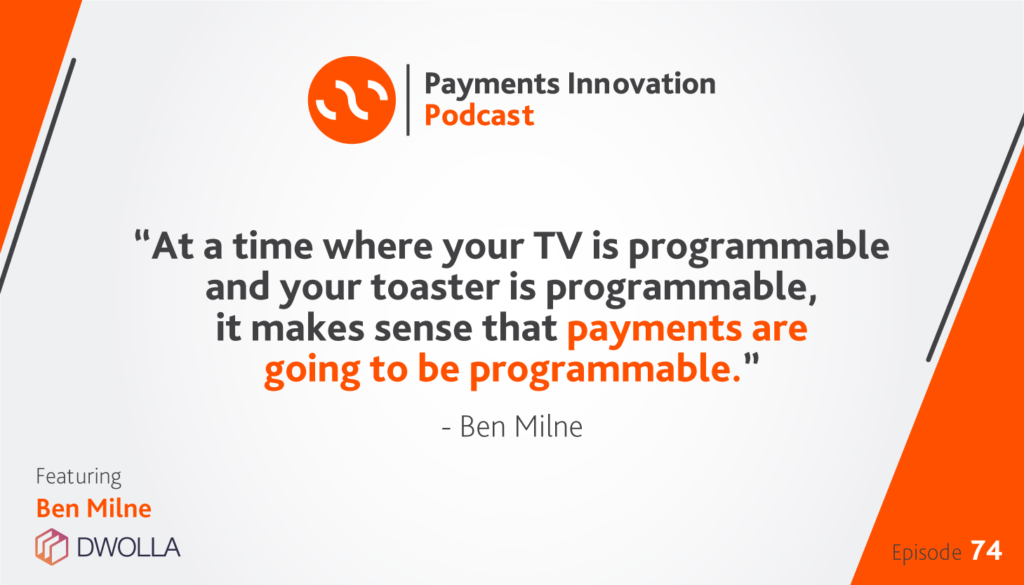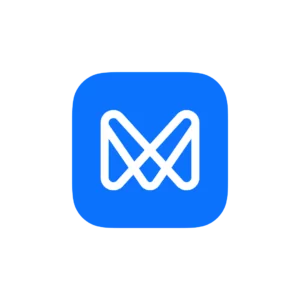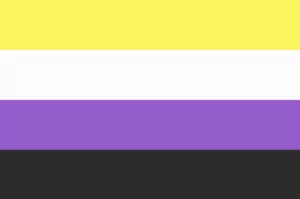When your toaster and your TV are programmable, doesn’t it make sense that your payments should be programmable, too?
Card payments often settle on ACH, but accessing the ACH Network for electronic payments is tough. It can take years to figure out accounting, corrections, automating returns, identity verification, and reconciliation.
What if those technical gaps were fixed? What if there were a simpler system? Would businesses use it?
The gaps have been fixed, a simplified solution has been created, and businesses are using it.
That solution is called Dwolla, and we had a conversation with the company’s founder, Ben Milne, on this episode of the Payments Innovation podcast.
Here are the highlights from our interview:
Dwolla originated as a way to avoid interchange fees
 “I started a company while I was in high school,” Ben said, “and ended up selling that to get into the world of payments. I was trying to avoid paying interchange fees through an e-commerce gateway.”
“I started a company while I was in high school,” Ben said, “and ended up selling that to get into the world of payments. I was trying to avoid paying interchange fees through an e-commerce gateway.”
This is how Dwolla got started.
In 2010, the company pushed its initial consumer product. Then about four years ago, the API-first platform people know today emerged.
“We focus on enabling programmable point payments and supporting our clients’ innovations,” Ben said.
Ben and his team realized that all card payments ended up settling on ACH, which is hard for businesses to access. (“Took me two years to get an origination agreement!” Ben said.) One could figure over five more years to determine accounting, corrections, automating returns, identity verification, and reconciliation. It’s a huge barrier to entry.
“I believed in the early days that if people had access to the system, they would simply use it,” Ben explained. “We were fortunate that they did.”
Bringing businesses together with scalable infrastructure
The rules of engagement for connecting the U.S. infrastructure are certainly more complex than in other parts of the world. You have licensing in every state, and the focus for a business is on just getting to market.
“One of the benefits (to setting up a business) at this point in time,” Ben said, “is that you can now partner with companies like Dwolla to provide best-in-class solutions. You don’t have to build everything yourself anymore so you can get to market two years faster.”
Dwolla can build a partnership for programmable payments whether you’re an international company building a U.S. sub or you’re building a U.S.-focused business that will go international in the future.
But what’s the cost?
“Our pricing has been a little bit of a barrier historically,” Ben admitted, “but we’ve recently fixed that. We’re hopeful that it’s also going to help us accelerate the growth of companies earlier on in their lifecycle this year.”
This partnership works great in order to bring business from outside the U.S. — other MSP businesses or FinTechs from Europe or Korea or Australia, for example, that want to enter our market but don’t know how to do it.
They see where they’re able to access the benefits of Dwolla’s technology and how quickly they can go to market. It’s much easier than the traditional path.
“We absolutely love our partnership with Currencycloud” — Dwolla
When you have an out-of-the-box solution that does real-time identity verification and real-time account-level transfers in a compliant way with a regulated partner, it can save you a lot of time.
As those partners or clients really grow, they also want to start bringing in their own banks and different bank partners.
“We’re bank agnostic,” Ben said. “None of that bothers us. The way that we’ve architected the infrastructure allows our clients to scale and even bring new partners to the ecosystem.”
Breaking the bank: Dwolla vs. legacy technology
“We had a client this morning working through one of the more complex funds flows,” Ben said.
The development time working directly with a bank would take 2-3 years. Dwolla can get that client rolling in six months, and provide all the wire framing, product and UI related work, compliance, and information security reviews.
How Dwolla keeps on innovating post-Internet
“A couple years ago, we made it so that a bank or credit union could also be represented as a customer type on the platform,” Ben said. “We found that banks that coming online as an end user of a client application and coming to us also and saying, ‘How can we standardize this functionality and roll it out to the rest of our client base where they can make use of it and expand our relationship with the Dwolla ecosystem’?”
And that was a turning point for Dwolla’s bank relationships.
No matter how businesses run or technology works, you still need to be connected to a financial institution. And if you can program your toaster, why not your payment system?
To find out more:
To find out more about Dwolla, check out Dwolla.com.
To ensure that you never miss an episode of Payments Innovation, subscribe on Apple Podcasts, or Spotify, or here.
Until next time!

